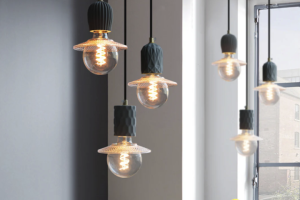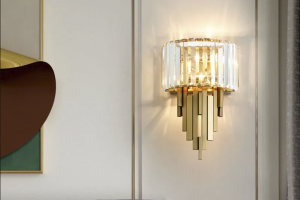Tiffany Table Lamps: A Brief History
For over a century, Tiffany table lamps have been an enduring symbol of elegance and sophistication. Their story began in the late 19th century, when Louis Comfort Tiffany, son of the founder of Tiffany & Co., began experimenting with a new type of glass that he called “Favrile.”
Tiffany’s Favrile glass was notable for its exquisite colors and textures, which resulted from a unique process of mixing metallic oxides into the glass while it was still hot. The resulting glass was stunningly beautiful, and Tiffany quickly realized that it had many potential applications beyond traditional stained glass.
One of the first applications that Tiffany explored for his new glass was in lighting. In 1895, he introduced the first Tiffany table lamp, which quickly became a sensation across America and Europe. The lamps were beautifully crafted, with intricate stained glass shades that featured striking designs inspired by nature and other artistic motifs.
The Elements of Tiffany Table Lamps
One of the defining characteristics of Tiffany table lamps is their use of stained glass. The glass shades of Tiffany lamps are made up of dozens or even hundreds of small pieces of glass, each one expertly cut and colored to fit together into a beautiful, cohesive whole. In many lamps, the colors and patterns are designed to mimic natural, organic forms like flowers, leaves, and dragonflies.
In addition to stained glass, Tiffany lamps often feature metalwork as well. The bases of the lamps are typically made from bronze, copper, or other high-quality metals, and the design of the base is often intricately detailed to complement the shade. The combination of stained glass and metalwork creates a unique style that is both elegant and striking.
The Enduring Appeal of Tiffany Table Lamps
Over the years, Tiffany table lamps have never fallen out of style. They have remained highly sought-after by collectors and enthusiasts alike, and their timeless elegance has made them a popular choice for home décor around the world.
One of the reasons for the enduring appeal of Tiffany lamps is their versatility. They come in a wide range of styles and sizes, from small accent lamps to larger table lamps that can serve as a room’s focal point. They can be paired with a variety of interior design styles, from traditional to modern, and their timeless beauty means that they will never look outdated or out of place.
Another factor that contributes to the appeal of Tiffany lamps is their quality. Tiffany lamps were meticulously crafted from the finest materials available, and the same level of craftsmanship is still evident in the Tiffany-style lamps that are produced today. They are true works of art, and their value as both decorative and collectible items means that they are a wise investment for those who appreciate fine craftsmanship and beauty.
Conclusion
There is something magical about the glow of a Tiffany table lamp. Its exquisite stained glass shade seems to come alive with the warm light of the bulb, casting a soft glow that can transform any space into a cozy, welcoming oasis.
For over a century, Tiffany table lamps have embodied an enduring elegance that is both timeless and stunning. With their unparalleled beauty and exceptional craftsmanship, Tiffany lamps are sure to remain a beloved and coveted part of home decor for generations to come.
So why not bring a touch of that elegance into your own home? Whether you opt for a small accent lamp or a larger tabletop model, a Tiffany table lamp is sure to add a touch of timeless charm to any room.




More Posts
Stunning Vintage Opaline Lights: Illuminating Homes with Timeless Elegance
Bringing Versatility to Light: Exploring the Benefits of Dual Light Technology
Shining Light on E14 Bulbs: The Ultimate Guide to Understanding and Using Them